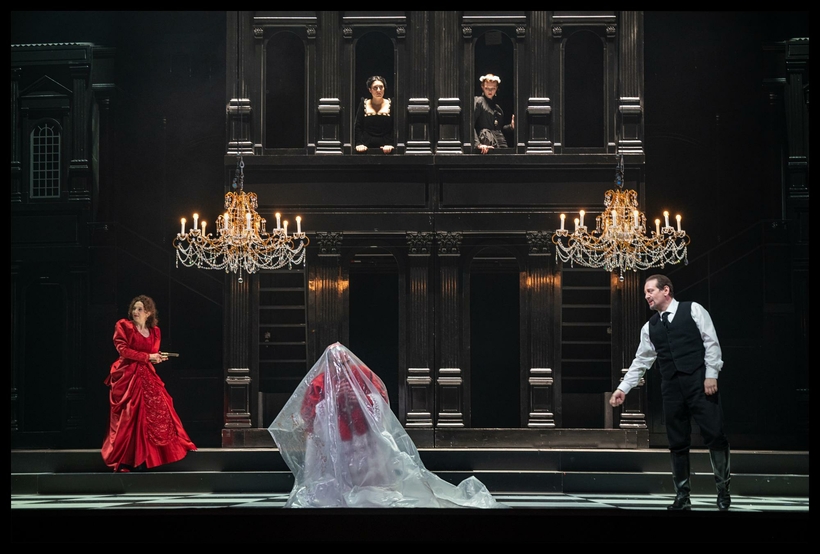Of the dozen operas by Camille Saint-Saëns, aficionados remember only the third: Samson et Dalila, in which the Philistine temptress lays her Israelite lover low by clipping his hair. Beware of sharp instruments! In Henry VIII, two operas and five years later, the composer makes hay of the executioner’s blade soon to sever the head of Anne Boleyn.
On May 16, after well over a century in near-total eclipse, Saint-Saëns’s crackling Tudor pageant livestreamed to international acclaim in a new production from the stage of La Monnaie, in Brussels. Directed by Olivier Py, the stark, handsome show tells its clear story in bold living tableaux; Alain Altinoglu conducts with assurance. Apparently by pure coincidence, the opera has also been in the sights of the Bard SummerScape Festival in Annandale-on-Hudson, which weighs in this month with a rival staging by Jean-Romain Vesperini, led by Leon Botstein. Viewers at home can catch that one, too.

In the video from Brussels, Py proves as adept at poetic suggestion as he is at linear storytelling. The ladies dazzle in period finery, which suits their personalities and their place at court. Princes of the church rock their hieratic vestments, as well they ought. Yet somehow it makes perfect sense that all the king’s men dress Victorian—as does His Majesty himself, except when momentarily posing for a stagey daguerreotype. Dance episodes suggest the mounting threat of torture and execution, hypnotically foreshadowing Anne’s death on the block.
More important, the score reveals the hand of a melodramatist of a high order. For atmosphere, Saint-Saëns strikes a courtly, ceremonial note rooted in diligent study of music of the English Renaissance. The orchestra paints in a predominantly dark yet sumptuous palette, while the singers adopt a rhetorical idiom well tailored to their characters’ high station. It’s not the filigreed histrionic bel canto Donizetti had lavished on Henry and Anne and their daughter Elizabeth a half century before. But under duress the faltering Catherine of Aragon and her youthful rival Anne Boleyn discharge their share of thrilling fireworks, sometimes even prefiguring verismo and Puccini, whose first opera, Le Villi, premiered just a year after the mostly retro Henry VIII.

Leading the Brussels cast, the baritone Lionel Lhote’s Henry inhabits his personal nuclear winter of the soul. In face, voice, and carriage, Marie-Adeline Henry cuts a figure of regal femininity as the outmaneuvered Catherine of Aragon. In Henry’s eyes and those of lesser admirers, Anne Boleyn radiates youth and angelic grace—assets scarcely apparent in Nora Gubisch’s piqued features and Orphan Annie frizz. That said, Gubisch’s preening while on the rise and her panic in decline expose Anne for exactly the vain, mean gold-digger she is. Her red dress and matching stockings speak volumes.
In the American cast, the role of Henry falls to Alfred Walker, opposite the Catherine of Amanda Woodbury and the Anne of Lindsay Ammann. As for the production values, the cat’s still in the bag. Though little known in America, the director looks great on paper.
The Monnaie Henry VIII is available for streaming on the OperaVision Web Site. The SummerScape show runs July 21 to 30, with a livestream on July 26 and an encore on July 29
Matthew Gurewitsch writes about opera and classical music for AIR MAIL. He lives in Hawaii

